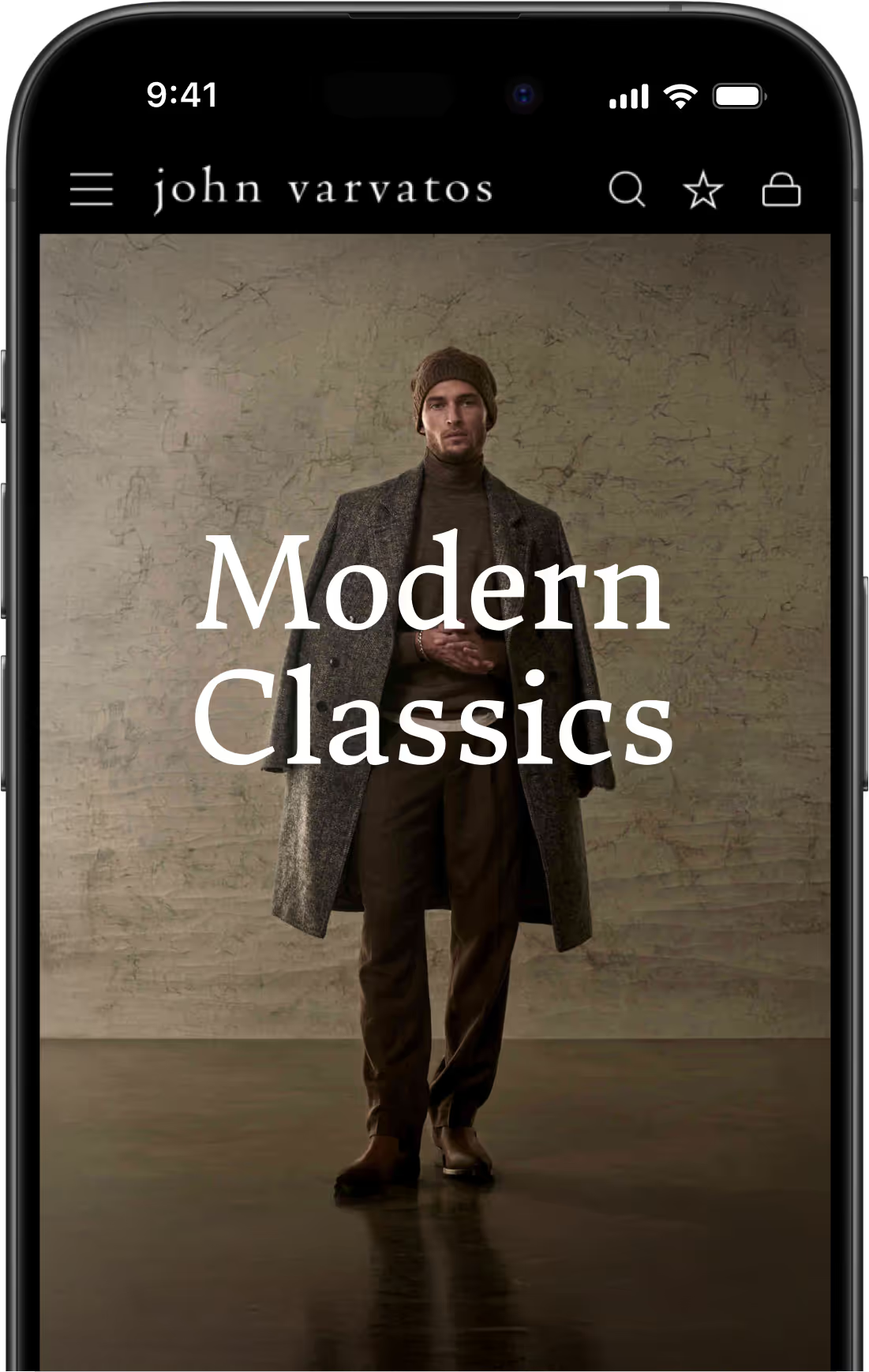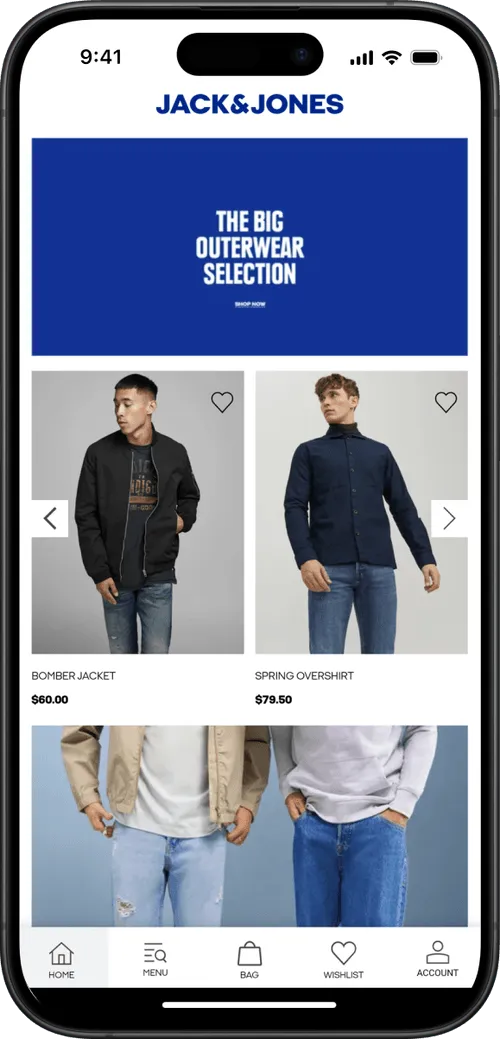Web vs Native App Push Notifications for eCommerce
- The fundamentals of web push notifications and native app push notifications are similar, but there are key differences to be aware of.
- Native push notifications have higher opt-in rates, are easier to personalize, drive higher engagement and have wider reach.
- Mobile push notifications are particularly powerful for reminding customers about abandoned carts.
- To send native push notifications, you'll need a mobile app. Check out MobiLoud for the easiest and most effective way to launch a mobile app for your store.
- The fundamentals of web push notifications and native app push notifications are similar, but there are key differences to be aware of.
- Native push notifications have higher opt-in rates, are easier to personalize, drive higher engagement and have wider reach.
- Mobile push notifications are particularly powerful for reminding customers about abandoned carts.
- To send native push notifications, you'll need a mobile app. Check out MobiLoud for the easiest and most effective way to launch a mobile app for your store.
Push notifications are rocket fuel for countless eCommerce businesses.
But, there are two distinct types: web push notifications and native app push notifications.
Which is best?
Native app push notifications are much better than web push notifications for eCommerce.
We don’t expect you to just take our word for it though. Read on and we’ll lay out our reasoning in depth.
Web vs Native App Push Notifications: The Key Differences
The term 'push notification' can be ambiguous, because there are two distinct types:
- Native app notifications (sometimes referred to as mobile push notifications)
- Web push notifications
Note that web push notifications can be sent on mobile too (through the browser). But in general, if you see the term “mobile push notifications”, it’s referring to native app push notifications.
What Are Native App Push Notifications?
Native app notifications are sent from a native iOS or Android app.
They're sent using the native infrastructure of the operating system, and can be highly personalized, content rich, and tightly integrated with device features like vibrations and sound settings.
The benefits of native push notifications include:
- Higher opt-in rates (users are much more likely to allow notifications for apps they've downloaded already over random websites).
- Great personalization (native apps can tailor notifications based on user behavior, preferences, and location, making each alert more relevant).
- Superior delivery rates (unlike web notifications, native alerts aren't at the mercy of browser sessions and can reach users round-the-clock).
- Increased engagement (rich media and CTAs within notifications can tempt users back into your app).
In summary, native push notifications enjoy higher opt-in rates, higher engagement, richer features, and can be worked into more sophisticated workflows and analytics setups.
What Are Web Push Notifications?
Web notifications are sent using the web browser’s infrastructure.
They do not require any kind of specific installation (except for sending mobile web push notifications to iPhone users), but the user must give their permission when they're on your site.
Web push notifications are generally simpler, less personalized, and are dependent on the browser running for delivery.
One advantage of web push is that they can be sent through both desktop and mobile browsers, but on mobile they lack the flexibility and UX of native notifications.
Now let's go deeper into the key reasons why native push notifications are better than web push.
3 Reasons Why Native App Notifications Are Superior for eCommerce
There are three key reasons why all eCommerce brands should prioritize native app push notifications before web push.
1: Native App Notifications Have Much Higher Opt-In Rates
For web push notifications, you must get visitors permission while they are on your site through a permission prompt.
On desktop they look like this:

And more importantly, on mobile they look like this:

These opt-in prompts are unattractive, and return poor results.
According to push provider Gravitec, opt-in rates for web notifications are a paltry 5% for eCommerce websites.
To be sure, 5% is better than nothing – and it’s often worthwhile to set up an opt-in and work web push notifications into your communication strategy.
But when it comes to actually using notifications to drive significant results, we want to do better than send them to 1 in 20 customers.
Native app notifications blow away their web counterparts here.

Think about how different it is to ask a random site visitor for permission compared to a user who has already gone to the trouble of downloading and installing your native apps.
The fact that the user downloaded the app is a sign of loyalty, so of course they'll be more receptive to you contacting them.
According to Airship's detailed report, opt-in rates for native app notifications on Android range from 49% to 95%, with an average of 81%.
On the iOS side, they range from 29% to 73%, with an average of 51%.
So, opt-in rates for native app push notifications are 10-15x higher than web push notifications.
Just having the apps gives you an opportunity to ask for permission the right way, and send messages to people who actually want to be contacted.
2. Native App Notifications are Better for Lucrative iOS Users
Though globally Android has more users, iOS users are more economically valuable.
Research has shown that even though there are twice as many Android users, and the Google Play Store has twice as many apps as the App Store - iOS apps generate twice as much revenue.

That’s because iOS is relatively dominant in rich countries, especially the US with ~58% of the market.
Not only are they dominant in the richer countries but they are popular with richer groups within those countries.
A study by Slickdeals found that, on average, iPhone users have an annual salary almost 40% higher than their Android counterparts ($54k vs $37k).
Further research by the National Bureau of Economic Research found that owning an iPhone is a strong indicator of high income.
In their words:
"Across all years in our data, no individual brand is as predictive of being high-income as owning an Apple iPhone."
So, sorry Android owners, but iPhone users are on average wealthier and more economically valuable to businesses.
iOS Push Notifications
For a long time, you couldn’t send web push notifications on iOS at all.
Web notifications were purely an Android and desktop thing, and if you wanted to send them to iOS users you could only do so through native apps.
That all changed though with iOS 16.4.
For the first time, web notifications got the greenlight from Apple and businesses have been able to send them to iOS users.
Even with this huge change, it is still much harder to send web push notifications to iOS users compared to Android.
On Android, you can just ask for a site visitor's permission when they’re browsing, and once they opt in that’s it, you can fire away with your notifications.
With iOS, you’ll need a progressive web app, and the customer will need to install it on their home screen.
Only then can you ask them for permission to send push notifications.
As you can imagine, this presents a lot of friction.
Few of your customers, realistically, are going to add your site to their home screen, then give permission for you to notify them.
With native apps though, downloading and installing it from the App Store then enabling notifications is a more reasonable expectation that fits with the customer’s existing habits.
Native apps give you a way to connect with iOS users with less friction, and once they’ve downloaded the apps and given permission you can send them personalized messages based on their in-app actions and behavior.
The bottom line: web push is good for Android and desktop - but native push is far superior for iOS.
Learn more about PWAs on iOS in this article
3. Native App Notifications Are More Personalized
Web notifications can be personalized to a degree, but they’re generally used as more of a scattergun approach.
Most businesses use them to send generic messages promoting new deals and products en masse.
The reason is that there’s only so much data you can get about a web visitor, especially if they aren’t logged in or have cleared cookies.
On the other hand, you can collect plenty of data on your native app users, and they’ll be logged in by default.
This makes it far simpler to send targeted and personalized messages.
Here are a few examples:
- Updates on products they’ve previously viewed.
- Notifications when an item in their wishlist is on offer.
- Cross sells and upsells.
- Shipping and delivery updates.
A crucial one is abandoned cart notifications.
Abandoned carts are a plague for eCommerce brands.
Consider that almost 70% of carts are abandoned in total, and the average eCommerce store loses 75% of sales due to this.
Luckily, abandoned cart notifications can save the day.
Abandoned cart notifications prompt the customer to finish their purchase. They’re 38% more effective than email reminders, and convert at nearly 8%.
Using them is as close to a no brainer as you’ll get in eCommerce.
Native apps are perfect for abandoned cart notifications.
Our own abandoned cart notification feature puts these notifications on autopilot for our customers.
When their apps detect that a customer has closed the app with items in their cart, it triggers a series of local notifications (only possible with an app) designed to nudge them back into the app to complete their purchase.
These work great. How great?
How about as much as $200k in revenue recovered in just 30 days.

To summarize: native apps allow you to set up more sophisticated notification flows and send more targeted and personalized messages.
They’re less intrusive, more relevant, and can provide more value because of this.
You can even give customers greater control over which notifications they receive through an in-app message center.
Get Started with Native Push Notifications
There are more reasons we could have used to argue for native push – better design options, deeper integration with device functionality, better UX, more detailed analytics.
But these are the three core arguments, which are reason enough to priority mobile push notifications:
- Higher opt in rates
- Better for iOS
- More personalized (and therefore powerful)
We’re not arguing that web push is worthless.
They’re relatively easy to implement, with a push notification service like OneSignal and a little configuration.
But push notifications from a native app are far superior, and deserve the lion’s share of your attention.
Of course, to send native app push notifications, you need a native app.
And the best way to build an app for your brand is MobiLoud.

MobiLoud converts your existing web store into iOS and Android apps worthy of a billion dollar brand, at a price point affordable for a small business.
We blend the best of the web with the best of native technology, building your apps in just weeks for a tiny fraction of the usual price tag.
We set you up with everything you need to send native push notifications, and to use them to maximum effect, including unlimited push notifications out of the box, plus the abandoned cart notification feature we discussed earlier.
This is handled completely by our team, who use best practices in CRO and copywriting to maximize recovered carts for you.
If abandoned carts are a problem for you, this alone could pay for the price of your app.

We’ve helped thousands of brands – from one-person startups to massive multinational retailers – build incredible apps.
Check out some of our case studies for an idea of what's possible.
Our team is ready to answer all your questions, and get you on the App Store and Google Play in just weeks.
Get started now – book a call and speak to an eCommerce app expert today!
FAQs
Convert your website into a mobile app












